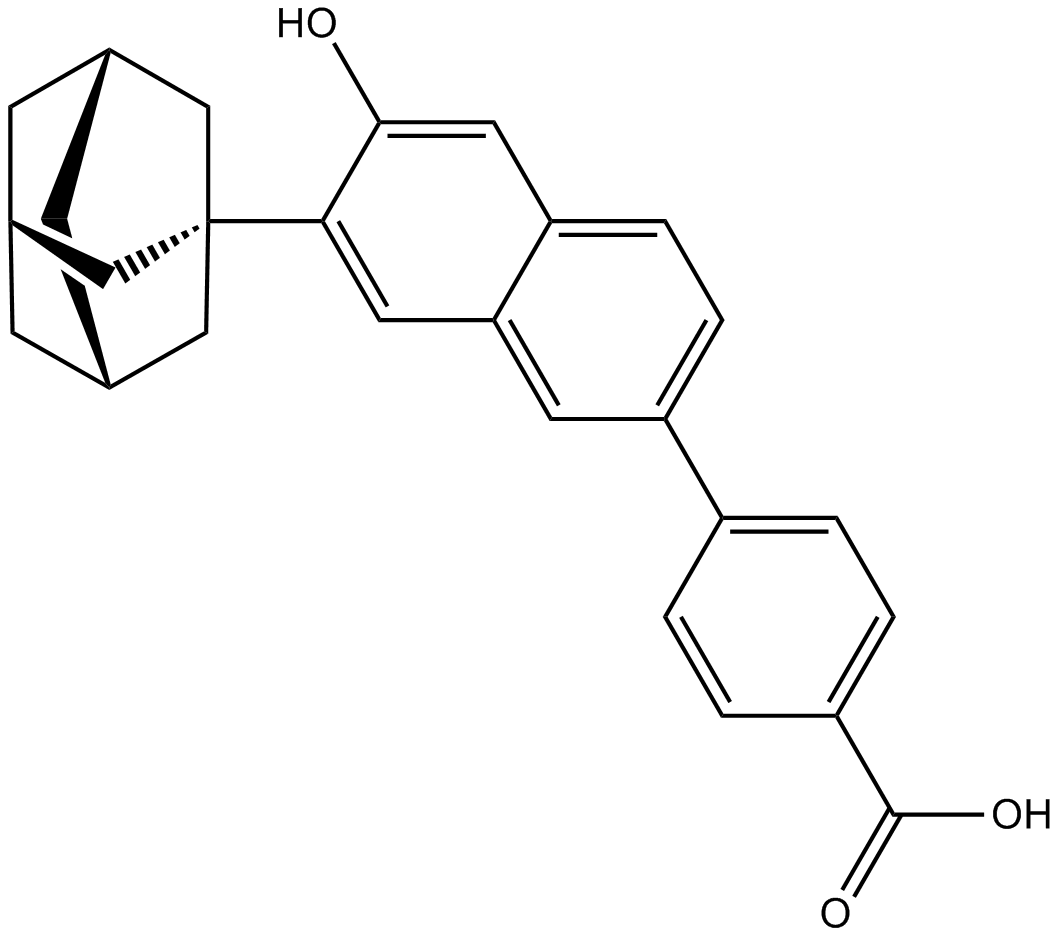CD 1530 |
| Catalog No.GC11794 |
RAR receptor agonist
Products are for research use only. Not for human use. We do not sell to patients.

Cas No.: 107430-66-0
Sample solution is provided at 25 µL, 10mM.
Target: RARγ, RARβ and RARα
Ki: 150, 1500, and 2750 nM
CD1530 is a potent and selective RAR receptor agonist with Ki values of 150, 1500 and 2750 nM for RARγ, RARβ and RARα receptors, respectively [1]. In addition, CD1530 shows moderate RARγ selectivity in the transcriptional assay with AC50 value of 1.8 nM. RAR-α is present in the majority of tissues while the distribution of RAR-β and γ is more selective [1]. RARγ mediated retinoic acid (RA)-induced growth arrest and apoptosis of neoplastic mouse papilloma cell lines [2].
In vitro: CD1530 inhibited excessive ROS production in tongue epithelial cells [2]. In addition, CD1530 was also a potent CYP26A1 inhibitor as ketoconazole with an IC50 value of 530 nM [3].
In vivo: The combination of the drugs bexarotene (300 mg/kg) and CD1530 (2.5 mg/100 mL in drinking water) was more effective than either drug alone in preventing oral carcinogenesis induced by the carcinogen 4-nitroquinoline 1-oxide (4-NQO) in a mouse model of oral-cavity squamous-cell carcinoma (OCSCC), which did not cause cardiovascular risks [2]. High fat diet (HFD)-fed mice treated with CD1530 (2.5 mg/100 ml in drinking water) showed no decreases in steatosis, Kupffer cell TGF-β1 expression, or Hepatic stellate cells (HSCs) activation [4].
References:
1. Thacher SM, Vasudevan J, Chandraratna RA. Therapeutic applications for ligands of retinoid receptors. Curr Pharm Des. 2000;6(1):25-58.
2. Tang XH, Osei-Sarfo K, Urvalek AM, Zhang T, Scognamiglio T, Gudas LJ. Combination of bexarotene and the retinoid CD1530 reduces murine oral-cavity carcinogenesis induced by the carcinogen 4-nitroquinoline 1-oxide. Proc Natl Acad Sci U S A. 2014;111(24):8907-12.
3. Thatcher JE, Buttrick B, Shaffer SA, Shimshoni JA, Goodlett DR, Nelson WL, et al. Substrate specificity and ligand interactions of CYP26A1, the human liver retinoic acid hydroxylase. Mol Pharmacol. 2011;80(2):228-39.
4. Trasino SE, Tang XH, Jessurun J, Gudas LJ. A retinoic acid receptor beta2 agonist reduces hepatic stellate cell activation in nonalcoholic fatty liver disease. J Mol Med (Berl). 2016.
Average Rating: 5 (Based on Reviews and 36 reference(s) in Google Scholar.)
GLPBIO products are for RESEARCH USE ONLY. Please make sure your review or question is research based.
Required fields are marked with *




















